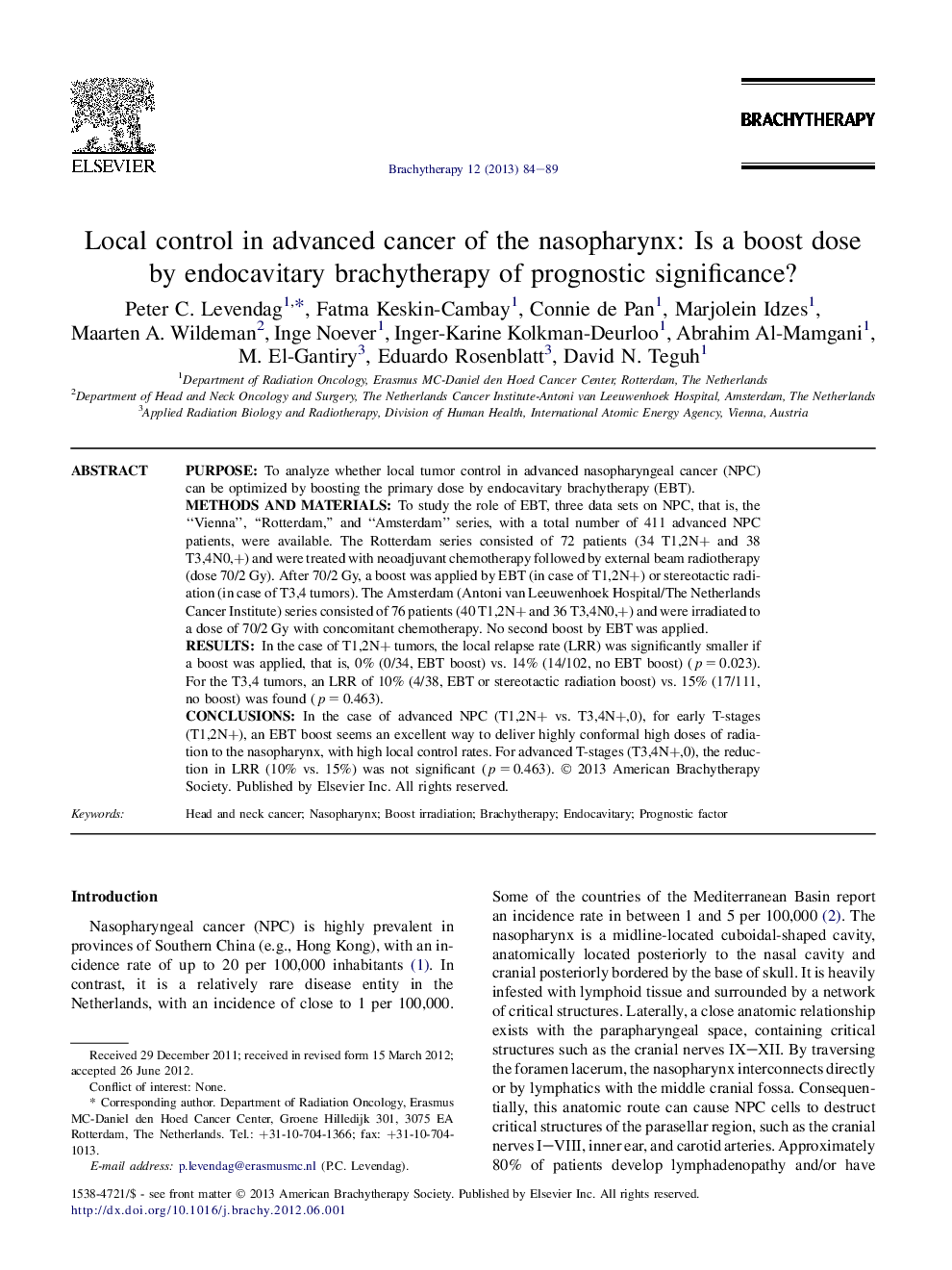| Article ID | Journal | Published Year | Pages | File Type |
|---|---|---|---|---|
| 6189852 | Brachytherapy | 2013 | 6 Pages |
PurposeTo analyze whether local tumor control in advanced nasopharyngeal cancer (NPC) can be optimized by boosting the primary dose by endocavitary brachytherapy (EBT).Methods and MaterialsTo study the role of EBT, three data sets on NPC, that is, the “Vienna”, “Rotterdam,” and “Amsterdam” series, with a total number of 411 advanced NPC patients, were available. The Rotterdam series consisted of 72 patients (34 T1,2N+ and 38 T3,4N0,+) and were treated with neoadjuvant chemotherapy followed by external beam radiotherapy (dose 70/2 Gy). After 70/2 Gy, a boost was applied by EBT (in case of T1,2N+) or stereotactic radiation (in case of T3,4 tumors). The Amsterdam (Antoni van Leeuwenhoek Hospital/The Netherlands Cancer Institute) series consisted of 76 patients (40 T1,2N+ and 36 T3,4N0,+) and were irradiated to a dose of 70/2 Gy with concomitant chemotherapy. No second boost by EBT was applied.ResultsIn the case of T1,2N+ tumors, the local relapse rate (LRR) was significantly smaller if a boost was applied, that is, 0% (0/34, EBT boost) vs. 14% (14/102, no EBT boost) (p = 0.023). For the T3,4 tumors, an LRR of 10% (4/38, EBT or stereotactic radiation boost) vs. 15% (17/111, no boost) was found (p = 0.463).ConclusionsIn the case of advanced NPC (T1,2N+ vs. T3,4N+,0), for early T-stages (T1,2N+), an EBT boost seems an excellent way to deliver highly conformal high doses of radiation to the nasopharynx, with high local control rates. For advanced T-stages (T3,4N+,0), the reduction in LRR (10% vs. 15%) was not significant (p = 0.463).
